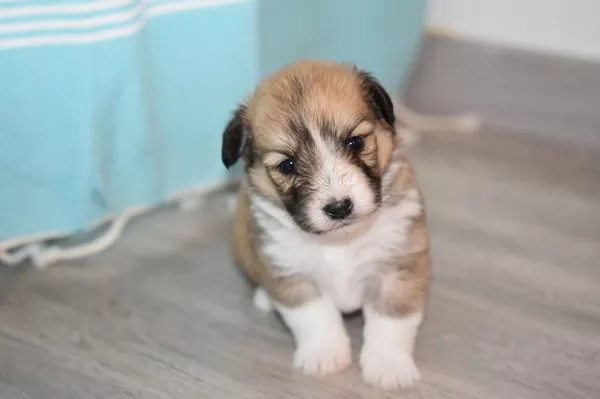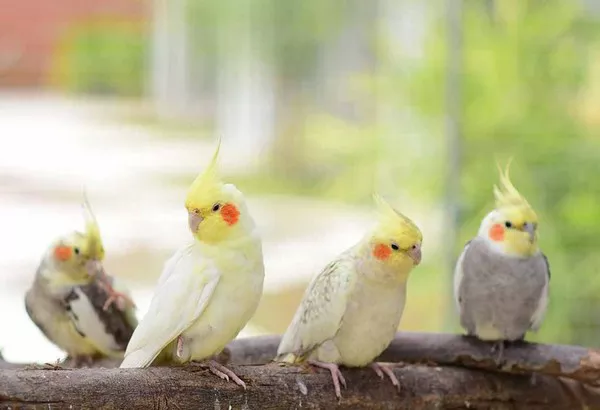Schnauzers are a distinctive breed known for their unique appearance and charming personality. A common question among potential and new schnauzer owners is whether these dogs have a double coat. Understanding a schnauzer’s coat type is crucial for proper grooming and care. In this article, we will explore the characteristics of a schnauzer’s coat, the differences between a single and double coat, and the grooming practices necessary to maintain their fur in optimal condition.
Understanding Schnauzer Coats
Schnauzers come in three sizes: Miniature, Standard, and Giant. Each size has specific traits, but all share the characteristic schnauzer coat, which is an essential aspect of their breed standard.
Characteristics of a Schnauzer’s Coat
The schnauzer’s coat is known for being wiry and dense, with a specific texture that sets them apart from other breeds. The coat is composed of two layers:
Outer Coat (Guard Hair): The outer coat is wiry and harsh to the touch. This top layer protects the dog from the elements and repels dirt and water.
Undercoat: The undercoat is soft and dense, providing insulation and additional protection against weather conditions.
This combination of a harsh outer coat and a soft undercoat is what constitutes a double coat, a characteristic found in all schnauzer sizes.
The Purpose of a Double Coat
A double coat serves several vital functions for schnauzers, particularly given their origins as working dogs. Understanding these functions can help owners appreciate the importance of proper coat care.
Protection from the Elements
The double coat provides excellent protection against various weather conditions. The outer coat’s wiry texture repels water and dirt, keeping the dog relatively clean and dry. The undercoat offers insulation, keeping the dog warm in cold weather and cool in hot weather.
Skin and Coat Health
The double coat also plays a crucial role in maintaining the schnauzer’s skin and coat health. The undercoat helps regulate body temperature and provides a barrier against skin irritants. Regular grooming helps distribute natural oils, promoting a healthy, shiny coat and skin.
Grooming a Schnauzer’s Double Coat
Proper grooming is essential for maintaining the health and appearance of a schnauzer’s double coat. Grooming practices can vary depending on whether the dog is a pet or a show dog, but certain fundamentals apply to all schnauzers.
Regular Brushing
Regular brushing is crucial for schnauzers to prevent matting and remove loose hair. The frequency of brushing depends on the individual dog’s coat and activity level, but generally, schnauzers should be brushed at least a few times a week.
Tools for Brushing: A slicker brush and a metal comb are essential tools for grooming schnauzers. The slicker brush helps remove tangles and loose hair from the outer coat, while the metal comb can be used to gently detangle the undercoat.
Technique: Start by brushing the outer coat to remove tangles and debris. Then, use the metal comb to work through the undercoat, ensuring you reach the skin to remove loose hair and prevent matting.
Hand Stripping vs Clipping
Schnauzer coats are traditionally maintained through hand stripping, a grooming technique that involves plucking dead hair from the coat by hand. This method maintains the coat’s texture and color and is essential for show dogs. However, many pet schnauzers are groomed using clippers for convenience.
Hand Stripping: Hand stripping preserves the natural wiry texture of the schnauzer’s coat. It involves removing dead hair from the root, which encourages new growth and maintains the coat’s color and texture. This process can be time-consuming and requires skill, so many owners seek professional groomers for hand stripping.
Clipping: Clipping involves using electric clippers to trim the coat to a uniform length. While this method is faster and easier, it can soften the coat’s texture over time and may alter the coat’s color. Clipping is a common choice for pet schnauzers as it requires less maintenance than hand stripping.
Seasonal Grooming Considerations
The double coat of a schnauzer requires different care depending on the season. Understanding these seasonal needs can help keep your schnauzer comfortable and healthy year-round.
Spring and Summer Grooming
During warmer months, schnauzers may shed more of their undercoat to stay cool. Regular brushing is essential to remove loose hair and prevent matting. Keeping the coat well-groomed also helps prevent overheating.
Regular Brushing: Increase the frequency of brushing to several times a week to manage shedding and prevent matting.
Trim the Coat: Consider trimming the coat to a shorter length to help your schnauzer stay cool. However, avoid shaving the coat completely, as the double coat provides protection from the sun and helps regulate body temperature.
Check for Parasites: Warm weather increases the risk of parasites such as fleas and ticks. Regularly check your schnauzer’s coat for signs of parasites and use preventive treatments as recommended by your veterinarian.
Fall and Winter Grooming
In colder months, the schnauzer’s double coat provides insulation to keep them warm. Proper grooming ensures the coat remains effective in protecting against cold weather.
Maintain the Undercoat: Regular brushing helps maintain the density of the undercoat, which is essential for insulation. Focus on removing loose hair and preventing matting.
Avoid Over-Trimming: While it’s essential to keep the coat tidy, avoid trimming too much during winter. A well-maintained double coat offers natural protection against the cold.
Check for Dry Skin: Cold weather can lead to dry skin. Ensure your schnauzer’s coat remains well-conditioned by using moisturizing shampoos and conditioners designed for dogs.
Common Coat Issues in Schnauzers
Despite regular grooming, schnauzers can experience various coat issues that require attention. Recognizing these issues early can help maintain the health of your dog’s coat.
See Also: How Much is a Giant Schnauzer Puppy?
Matting
Matting occurs when hair becomes tangled and forms tight knots. This is a common issue in schnauzers, especially if their coat is not brushed regularly.
Prevention: Regular brushing is the best way to prevent matting. Pay special attention to areas prone to matting, such as behind the ears, under the legs, and around the collar.
Treatment: If matting occurs, gently work through the knots with a slicker brush and metal comb. Severe mats may require professional grooming to remove without causing discomfort to the dog.
Skin Irritations
Skin irritations can result from various factors, including allergies, parasites, and environmental conditions. These issues can affect the health of the schnauzer’s coat.
Allergies: Allergies can cause itching, redness, and hair loss. Consult your veterinarian if you suspect your schnauzer has allergies. They can recommend treatments and dietary adjustments to manage the condition.
Parasites: Fleas, ticks, and mites can cause significant discomfort and damage to the coat. Regularly check your schnauzer for signs of parasites and use preventive treatments as recommended by your veterinarian.
Environmental Factors: Dry air, harsh shampoos, and exposure to irritants can lead to skin problems. Use gentle, moisturizing grooming products and ensure your schnauzer’s environment is conducive to healthy skin.
Coat Color Changes
The color of a schnauzer’s coat can change over time due to various factors, including sun exposure, aging, and grooming practices.
Sun Exposure: Prolonged exposure to sunlight can bleach the coat, leading to lighter or reddish hues. Protect your schnauzer from excessive sun exposure, especially during peak hours.
Aging: As schnauzers age, their coat color may change naturally. This is a normal part of the aging process and does not typically indicate health issues.
Grooming Practices: Regular hand stripping helps maintain the natural color of the coat. Clipping can sometimes alter the texture and color over time.
Health Considerations Related to the Coat
A schnauzer’s coat is not only an aesthetic feature but also an indicator of overall health. Ensuring your schnauzer’s coat remains healthy requires attention to various aspects of their well-being.
Nutrition
Proper nutrition is essential for maintaining a healthy coat. A balanced diet with the right nutrients supports skin and coat health.
Omega-3 and Omega-6 Fatty Acids: These essential fatty acids promote a healthy, shiny coat. Consider incorporating fish oil or flaxseed oil into your schnauzer’s diet.
Protein: High-quality protein sources are crucial for coat health. Ensure your schnauzer’s diet includes sufficient protein from animal sources.
Vitamins and Minerals: Vitamins such as A, E, and B-complex, along with minerals like zinc and biotin, are vital for maintaining coat health. Consult your veterinarian for dietary recommendations.
Hydration
Adequate hydration is essential for maintaining a healthy coat. Ensure your schnauzer has access to fresh water at all times.
Water Intake: Encourage your schnauzer to drink enough water, especially during hot weather or after exercise. Proper hydration supports overall health and coat condition.
Moisturizing Products: Use moisturizing shampoos and conditioners designed for dogs to prevent dry skin and maintain a healthy coat.
Special Considerations for Show Schnauzers
Show schnauzers require specific grooming practices to meet breed standards and excel in competitions. These practices ensure that the dog’s coat remains in top condition and showcases their best features.
Coat Preparation for Shows
Preparing a schnauzer’s coat for a show involves meticulous grooming to enhance the coat’s texture and appearance.
Hand Stripping: Show schnauzers typically undergo regular hand stripping to maintain the correct coat texture and color. This process ensures the coat meets the breed standard and looks its best in the show ring.
Trimming and Shaping: Professional groomers use precise trimming techniques to highlight the schnauzer’s distinctive features, such as the eyebrows, beard, and leg furnishings.
Coat Care Products: Show schnauzers may benefit from specialized coat care products designed to enhance texture and shine. These products help achieve a polished appearance for competitions.
Conclusion
Understanding whether schnauzers have a double coat is essential for providing proper care and grooming. Schnauzers indeed have a double coat, consisting of a wiry outer coat and a soft undercoat that provides insulation and protection. Regular grooming, including brushing, hand stripping or clipping, and seasonal considerations, is crucial for maintaining the health and appearance of their coat. By following appropriate grooming practices and monitoring coat health, schnauzer owners can ensure their dogs look and feel their best. Whether for pet companionship or show purposes, a well-maintained coat reflects the overall health and vitality of these beloved dogs.
Related Topics:


























